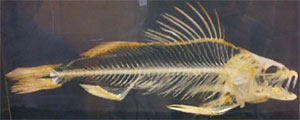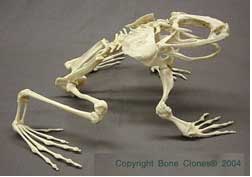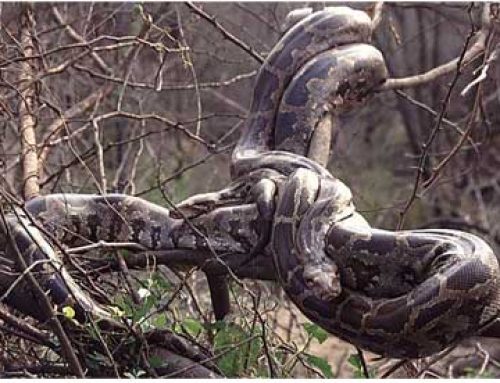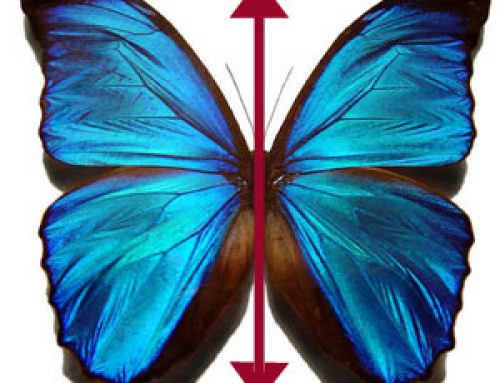
A fish skeleton
Before there were bones
One-celled animals don’t have any support system that holds them in a certain shape. Plants do have a support system, but it’s the cellulose in the cell wall of each cell, rather than bones.
What are arthropods?
The Proterozoic eon
All our biology articles
Early multi-celled animals like jellyfish and sponges and worms also didn’t have skeletons, but beginning with arthropods, about 550 million years ago, animals began to make specialized structures to support their bodies and give them a definite shape.

A crab on the beach
What is an exoskeleton?
The earliest skeletons were exoskeletons – they were on the outside of the animal. Modern lobsters, crabs, and snails have exoskeletons. These hard shells formed on creatures during the Proterozoic Eon.
The spinal cord and vertebrae

Eels were among the first animals to evolve a spinal cord and vertebrae: the first steps to a skeleton.
By about 510 million years ago, eels began to have their skeletons on the inside as well as on the outside (their scales). They evolved first notochords and then vertebrae to protect their delicate spinal cords. These early inside skeletons (endoskeletons) were made out of cartilage rather than bone. Sharks still have skeletons made out of cartilage.
The Cambrian period
What are vertebrae?
A project with vertebrae
Fish skulls made out of teeth!
By about 480 million years ago, some fish were beginning to have teeth, so they could eat other fish. To protect their heads, some fish evolved their teeth into skulls – the earliest skulls look like lots of tiny teeth! Fish also evolved two sets of fins – one near their heads, and the other about half-way down – to help them swim faster.
What are fish?
The Silurian period

Frog skeleton (thanks to Bone Clones)
During the Devonian period, about 400 million years ago, many seas were very shallow, and fish evolved to be able to live in very shallow water. Their fins developed into four legs, because walking worked better than swimming in these puddles, and they developed fingers to help them balance when they were walking.
From fish to frogs
Gradually these lungfish evolved into frogs, about 375 million years ago, and lived more and more on land. Their bodies were not supported by the water anymore, and they needed stronger bones to hold them up. How did the frog skeleton change from the fish skeleton? Can you see which parts match up?
More about lungfish
More about frogs
The Devonian period
Starting from the head, you can see that frogs have lost all their fish teeth. They didn’t need teeth to eat the little insects they lived on. Like fish, frogs have hard skulls, but they have much bigger eye sockets, because they needed better eyes to catch the flying insects. Where fish have vertebrae and ribs, frogs have them too, but fewer of them.
More about skeletons
Learn by doing – Fish skeletons
Learn by doing – Vertebrae
Bibliography and further reading about skeletons:





[…] findings might help explain why we have bones at all. At only 509 million years old or so, internal skeletons are “a relatively late piece of the evolutionary toolkit,” says […]
[…] findings might help explain why we have bones at all. At only 509 million years old or so, internal skeletons are “a relatively late piece of the evolutionary toolkit,” says […]